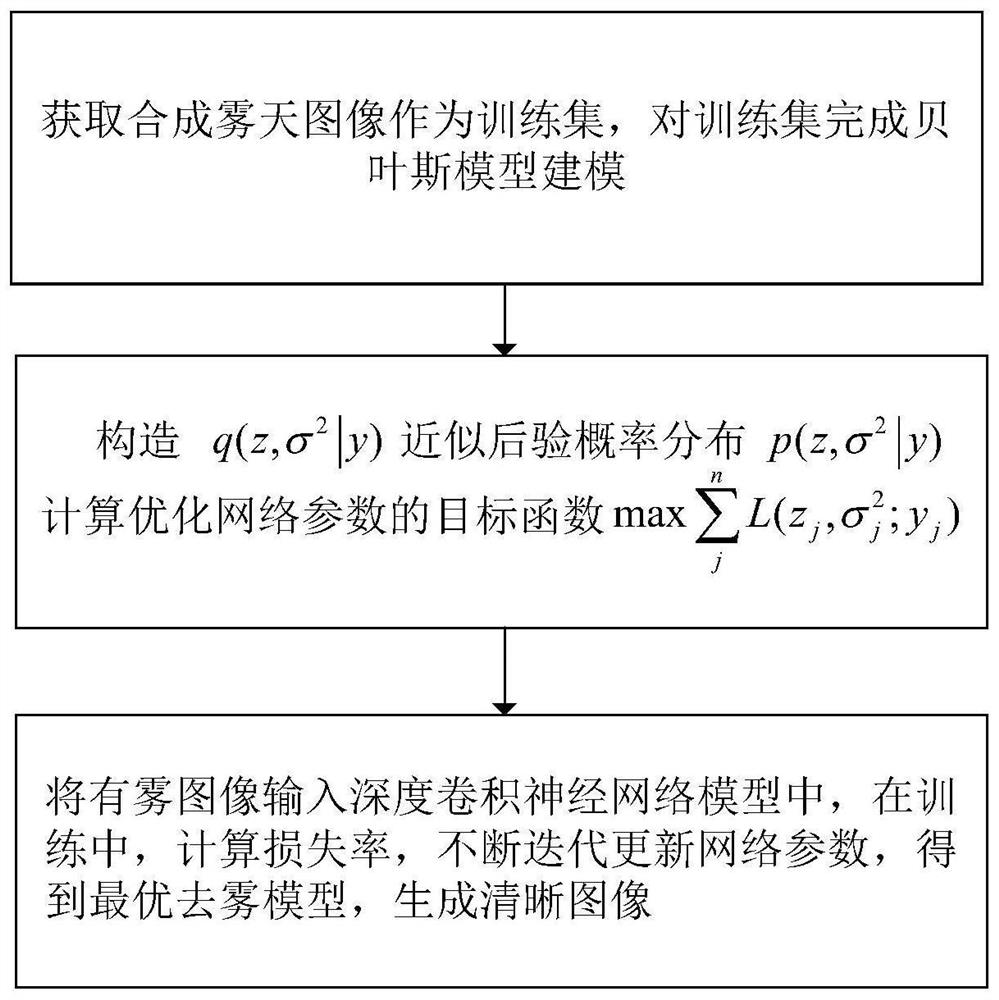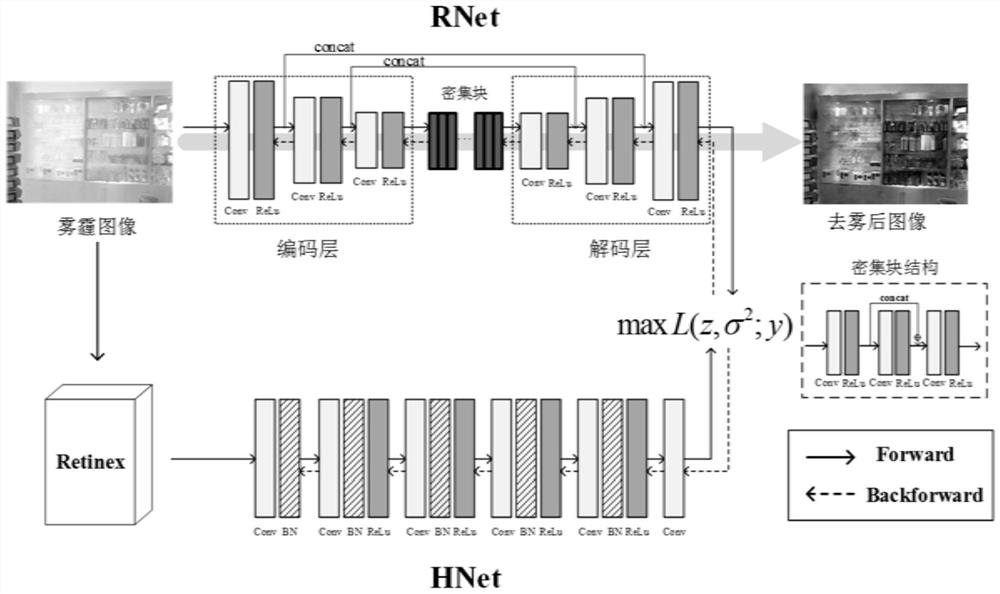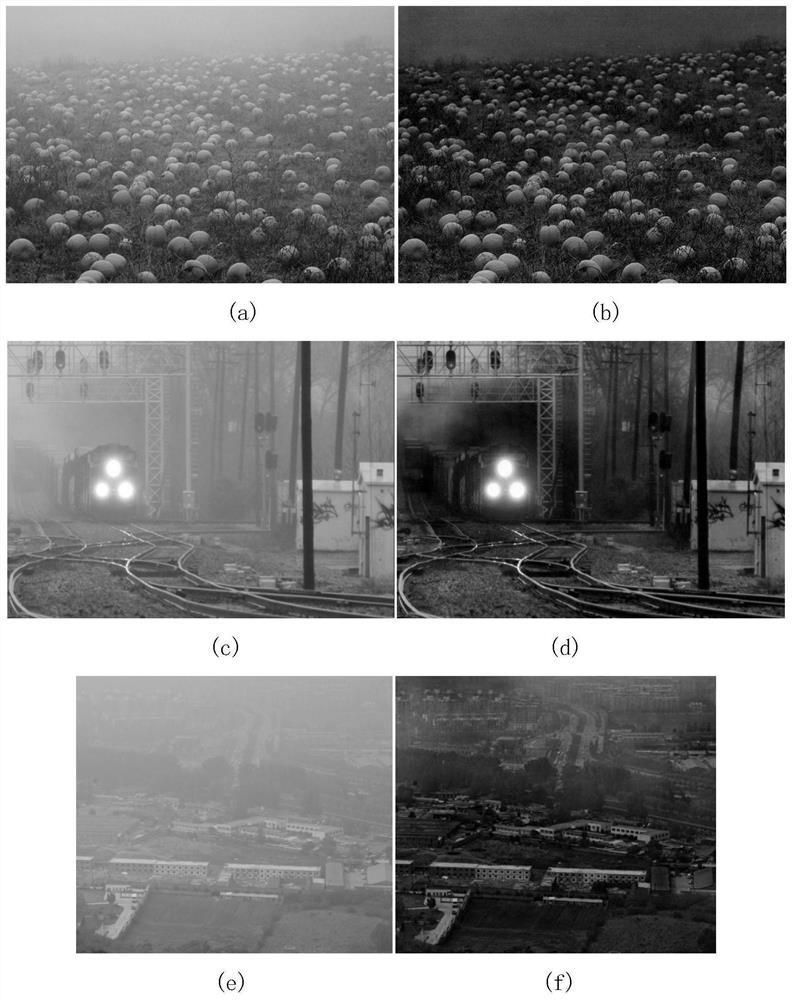Image defogging method based on deep convolutional neural network under Bayesian framework
A Bayesian framework and deep convolution technology, applied in the field of image processing, can solve the problems of defog image noise, defogging performance impact, etc., and achieve the effect of wide scene range and good effect
- Summary
- Abstract
- Description
- Claims
- Application Information
AI Technical Summary
Problems solved by technology
Method used
Image
Examples
Embodiment Construction
[0052] combine Figure 1 ~ Figure 3 As shown, embodiments of the present invention include:
[0053] Step S1. Obtain a synthetic fog image dataset ITS as a training set, and complete Bayesian model modeling on the training set.
[0054] Specifically, in this embodiment, the ITS data set is an indoor foggy image data set, including 1399 clear images and 13990 foggy images. One clear image in the ITS data set corresponds to 10 foggy images of different concentrations. image.
[0055] Suppose the training set of synthetic fog images is the y j foggy image, x j Clear image, natural foggy image j The generation process is as follows:
[0056] the y i ~N(y i |z i ,σ 2 ), i=1,2...,d(1-1).
[0057] where z∈R d is the latent clear image from the hazy image y, N(·|μ,σ 2 ) means that the mean is μ and the variance is σ 2 The Gaussian distribution of , d is the product of the length and width of the training image, representing the image size. The haze information is model...
PUM
 Login to View More
Login to View More Abstract
Description
Claims
Application Information
 Login to View More
Login to View More - R&D
- Intellectual Property
- Life Sciences
- Materials
- Tech Scout
- Unparalleled Data Quality
- Higher Quality Content
- 60% Fewer Hallucinations
Browse by: Latest US Patents, China's latest patents, Technical Efficacy Thesaurus, Application Domain, Technology Topic, Popular Technical Reports.
© 2025 PatSnap. All rights reserved.Legal|Privacy policy|Modern Slavery Act Transparency Statement|Sitemap|About US| Contact US: help@patsnap.com



